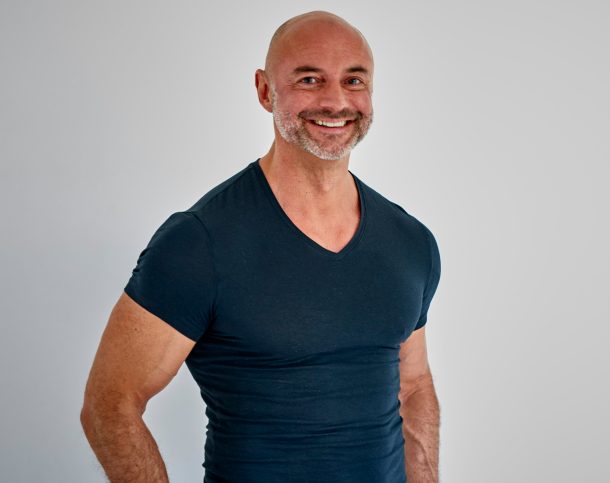Many coaches ask me:
- How do I get clients
- Where do I find clients
- How do I get more clients
Very few ask me:
- How can I know my clients better
- What feedback systems can I install
- How can I align to meet client needs
When I first started out, I obsessed over creating clients.
I kept telling myself, “If you don’t have paying clients, you don’t have a business.”
But today, I want to shift focus and energy to your existing clients.
Asking, “how can you understand and serve them more deeply?”
By neglecting to go deeper, you risk falling short of expectation and experience.
Which can lead to unhappy clients, fewer referrals, and difficulty in growing your business.
Let’s dive in.
A client focused mindset
“If you don’t appreciate your clients, someone else will.” Jason Langella
Before launching the Evolving Coach, my co-founder Jamini Padleckis and I sat down and asked,
“How can we understand our clients so that we can evolve together?”
We knew the key to building a thriving coaching community was creating a balance between new and existing members.
But figuring out how to deeply understand and serve our clients took extra time and thought.
Here are some of the ideas we’re putting into practice (behind the scenes).
Before: Create an application process
One of the most effective ways to ensure you’re attracting desired clients is to put in place an application process.
This helps align your program’s goals with your clients’ expectations.
Our primary goal at the Evolving Coach is to ensure a good fit between our membership and any potential member.
So, in our future application process we’ve included questions such as:
- Why do you want to join the membership now?
- What are the top 3 benefits you desire by joining the membership?
- What are your 3 biggest pain points (coaching and/or business)?
- In what ways do you think your coaching practice will evolve through this membership?
These questions will help us better understand their motivations, challenges, and aspirations.
To structure an effective application, include a mix of open-ended and specific questions.
This supports applicants to reflect on their current situation and commitment to their coaching journey.
Keep the application concise yet comprehensive.
Strike a balance between gathering essential information and not overwhelming the applicant.
During: Engaging in meaningful conversations
Once you’ve welcomed clients into your coaching program, it’s time to engage them in meaningful conversations.
These conversations build trust and a strong coaching relationship.
Consider the following strategies:
Set aside dedicated time to speak with at least 5 current or past clients.
Ask about their experience with your coaching:
- What could be improved?
- What did they find most valuable?
- How did your approach resonate?
If it didn’t, what would have made the experience more impactful?
Their answers will provide invaluable insights for refining your approach going forward.
Remember to take notes!
During and after: Gathering feedback
Next, think about ways you can gather ongoing feedback.
How might you capture suggestions to continuously improve the experience?
By providing multiple avenues for feedback, you demonstrate your commitment to your clients’ growth. And your willingness to adapt to their evolving needs.
Some of the methods we’ve implemented at the Evolving Academy include:
Support and Feedback Forms
- Providing a space for members to share their bright ideas and suggestions.
- Inviting members to submit questions in advance of Live Events (e.g., Business Pow Wow) to address their specific challenges.
Membership Feedback Surveys
Surveying members to gather input on various aspects such as:
- Service Offerings
- Community Spaces
- Overall Brand Alignment
By actively seeking and implementing feedback, you’re creating a dynamic and responsive environment for both you and your clients.
Continuously refine your coaching
As you collect insights from conversations and feedback, it’s essential to use this information to continuously refine your coaching approach.
For example, we’ll be integrating ours and sharing them with our community in future experiences.
Remember, the key to sustainable business growth lies in deeply understanding and serving your existing clients rather than solely focusing on acquiring new ones.
By digging deeper, you’ll create a stronger foundation for long-term success.
Conclusion
Building a successful coaching business is an evolving journey of learning, growth, and refinement.
By implementing an effective system you’ll continuously adapt your approach.
Whether that’s an application process or gathering systemic feedback.
You’re demonstrating your commitment to your clients’ success. And your dedication to evolving as a coach.
- Always seek to make an impact
- Embrace the journey
- Trust the process.
Keep your clients at the heart of your business, and you’ll create a practice that is both fulfilling and transformative for those you serve.
Next steps
- Identify the three smartest questions you haven’t asked your clients yet.
- Consider which areas would be useful to have more clarity.
- Commit to finding out in your preferred method.
Include them in your:
- Next coaching sessions
- Feedback survey or follow-up email
- Onboarding process or client application
The key is to be intentional and consistent.
Ask these questions and actively listening to your clients’ responses.
Then apply the insights going forward.


